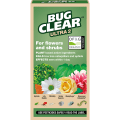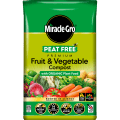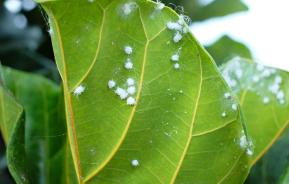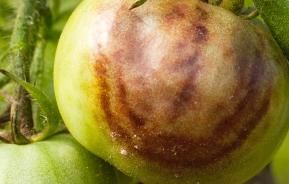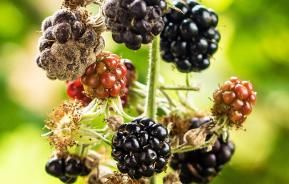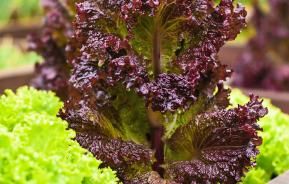
11 common fruit and vegetable diseases
Pests and diseases that can affect fruit and vegetable crops
Disease, pests and fungus can be a common sight around many vegetable patches and fruit gardens. If not identified and acted upon quickly it has the potential to decimate all your hard growing work! We have identified the listed the top 11 most common fruit and vegetable pests, diseases and fungus, to help you prevent and control the problem before it takes over your garden.
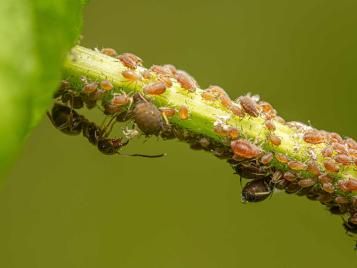
1. Aphids
Likely to be the most common garden pest you can find your garden. Aphids are tiny sap-sucking insects that are almost invisible to the naked eye - but when feeding in clusters are more apparent. Unless controlled effectively, Aphids have the ability to cause plants to wilt, curl and turn yellow. Luckily, aphid numbers can be controlled fairly easily using an effective insecticide.
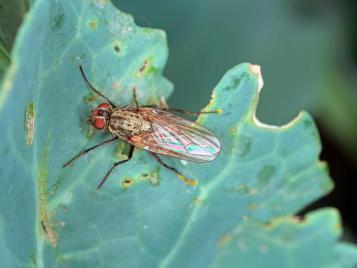
2. Cabbage root fly
Adult cabbage root flies can look rather like house flies. These garden pests affect the brassica family of cabbages, Brussels sprouts, cauliflower and broccoli. The larvae of the cabbage root fly which resemble white maggots can be very damaging as they eat the roots and stem base. This then leads to wilting and the plants won't recover when watered. Unfortunately, many home garden pesticides are not suitable to use against this pest, so the best to try and limit an infestation is to carry out good crop rotation.
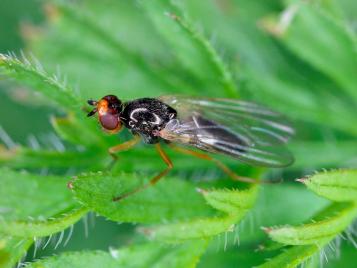
3. Carrot fly
The Carrot fly, as its name suggests, mainly affects carrots crops. It is a small black-bodied fly whose larvae feed on the roots of carrots and related plants, such as celeriac, parsnip, parsley and celery. Their eggs at the base of the plant and bury into the roots causing disfiguring black 'mines' which in turn then leads to the roots rotting. Whilst there are no pesticides available for home garden use against carrot fly, carrots were sown after mid-May are likely to avoid the first group of this pest; similarly, carrots harvested before late August are more likely to avoid the second group. Try protecting your crops by using an insect-proof netting. Along with good crop rotation, this can help to reduce infestations. Some carrot cultivars are less susceptible to carrot fly for example 'Fly Away' so choose carefully.
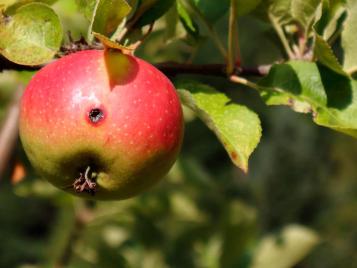
4. Codling moth
The Codling moth can be a serious problem for apples but also affects pears and can even be found in walnut and quince fruits. The caterpillars bore into the fruit, eating it and causing damage internally which essentially ruins the fruit. Codling moth caterpillars can only be controlled on apple and pear with insecticides before they enter the fruits. Alternative treatment methods include Pheromone traps which consist of an open-sided box that is hung in the tree in early May. The bottom of the box has a sticky sheet on which the pheromone pellet is placed and attracts and traps male codling moths.
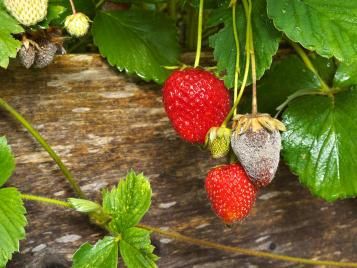
5. Grey mould
Grey mould is an extremely common disease and grows on many plants, particularly soft fruits such as strawberries and gooseberries. As the name suggests a greyish fuzzy fungal growth develops over the infected area. It is best to remove and destroy all affected plant parts. For plants grown under glass increase ventilation and hygiene by removing dead and dying leaves.
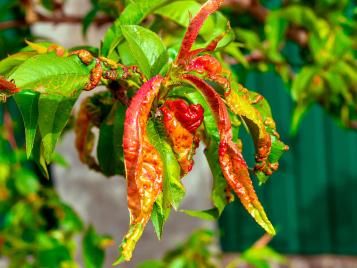
6. Peach leaf curl
Peach leaf curls is a crippling fungal disease of peaches, nectarines, almonds and apricots that distorts leaves and causes premature leaf fall. Immediately remove and destroy all infected leaves and plant parts. This will reduce the number of spores shed to overwinter on the plant and re-infect the following spring. Pick up any fallen foliage and destroy it. Do not place infected foliage on your compost heap.
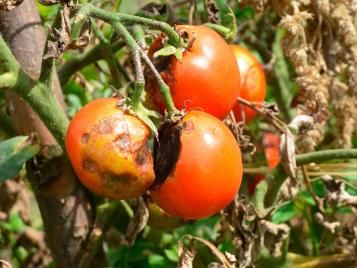
7. Potato and tomato blight
Blight is a serious disease of potatoes and tomatoes, which can completely destroy the crop or make it inedible. Outdoor tomatoes are the most badly affected, blight is not as common on greenhouse tomatoes. Blight causes discolouration of the leaves, turning them brown from the edges inwards. The leaves can dry and curl, although in moist conditions a white fungal growth can occur around the edges. The stems of the plants will also turn brown and in advanced cases, the plant will collapse and die. Carefully remove and destroy all affected parts as soon as you see them. A degree of protection can be achieved by preventative spraying with a suitable fungicide. Spray before symptoms occur early in the growing season or in warm, moist conditions.
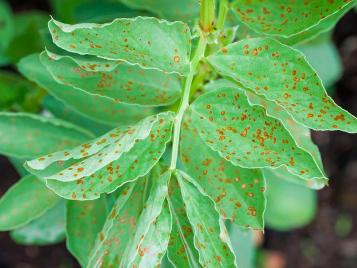
8. Rust
The spores need a moist environment in which to prosper. The fungus develops mostly on leaves but also on stems. In appearance, they can develop either as patches or as pustules (like septic spots).

9. Strawberry leaf spot
The spots can be of various colours - grey, brown or black. The spots are in fact dead leaf tissue caused by the fungus which spreads the disease.
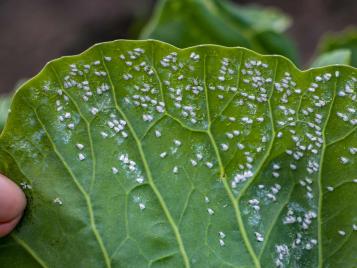
10. Whitefly
These little pests set up home and live out their lives on the underside of leaves. As adults, they are about 2mm long with white wings, which give them their name.


